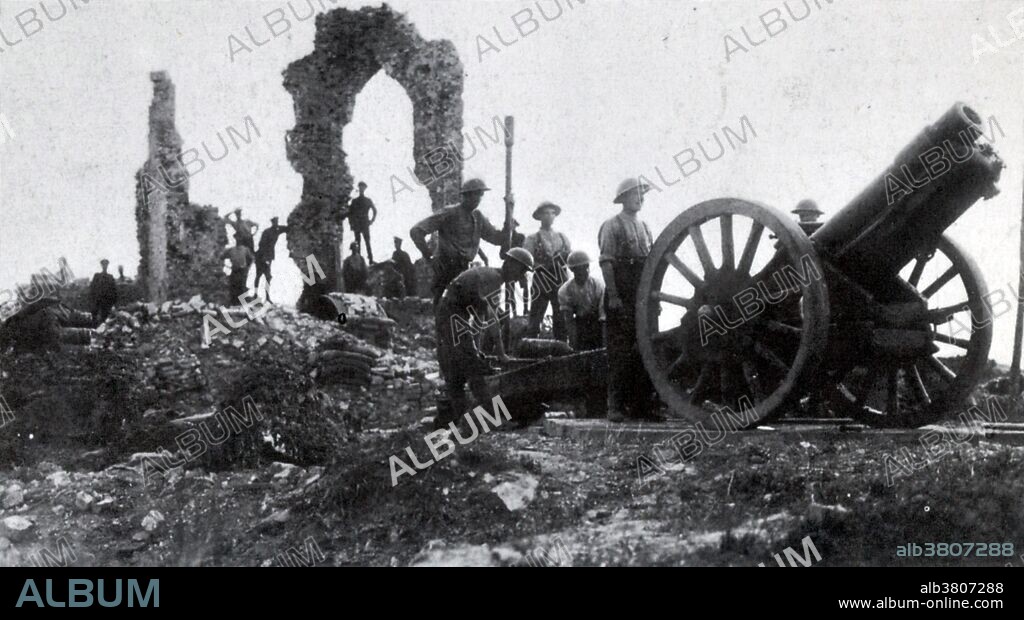alb3807288
WWI, BEF Howitzer Crew, Battle of Pilckem Ridge, 1917

|
Ajouter à une autre Lightbox |
|
Ajouter à une autre Lightbox |



Avez-vous déjà un compte? S'identifier
Vous n'avez pas de compte ? S'inscrire
Acheter cette image.
Sélectionnez l'usage:

Titre:
WWI, BEF Howitzer Crew, Battle of Pilckem Ridge, 1917
Légende:
Voir la traduction automatique
British 6 inch howitzer crew, August 1917. The Ordnance BL 6 inch 26cwt howitzer was originally towed by horses but from 1916 onwards was commonly towed by a 4 wheel drive 3 ton lorry as heavy field artillery. The wooden spoked wheels could be fitted with "girdles" for work in mud or sand to prevent them sinking. The Battle of Pilckem Ridge, July 31 - August 2, 1917, was the opening attack of the main part of the Battle of Passchendaele. A substantial amount of ground was captured and a large number of casualties inflicted on the German defenders, but the German defenders also recaptured some ground on the XIX Corps front. Heavy rainfall had a serious effect on operations, causing more problems for the British who were advancing into the area devastated by artillery fire and was mostly flooded and muddy. The resistance of the German Fourth Army, unusually wet weather, the onset of winter and the diversion of British and French resources to Italy, allowed the Germans to avoid a general withdrawal. The campaign ended in November when the Canadian Corps captured Passchendaele.
Crédit:
Album / Science Source / New York Public Library
Autorisations:
Modèle: Non - Propriété: Non
Questions sur les droits?
Questions sur les droits?
Taille de l'image:
4200 x 2326 px | 27.9 MB
Taille d'impression:
35.6 x 19.7 cm | 14.0 x 7.8 in (300 dpi)
Mots clés:
ARME • ARMEE • ARMÉEE • ARMÉES • ARMES • ARTILLERIE DE CAMPAGNE • ARTILLEUR • BELGE • BELGIQUE • CÉLÈBRE • CELEBRITE • ÉVÉNEMENT • FRONT DE L'OUEST • GRANDE GUERRE • GUERRE 14-18 • GUERRE 1914-1918 • GUERRE MONDIALE I • GUERRE • HOMME • MUNITION • OBUS • OBUSIER • PREMIERE GUERRE MONDIALE (1914-1918) • PREMIERE GUERRE MONDIALE • PREMIERS SECOURS • XXE SIECLE
 Pinterest
Pinterest Twitter
Twitter Facebook
Facebook Copier le lien
Copier le lien Email
Email
